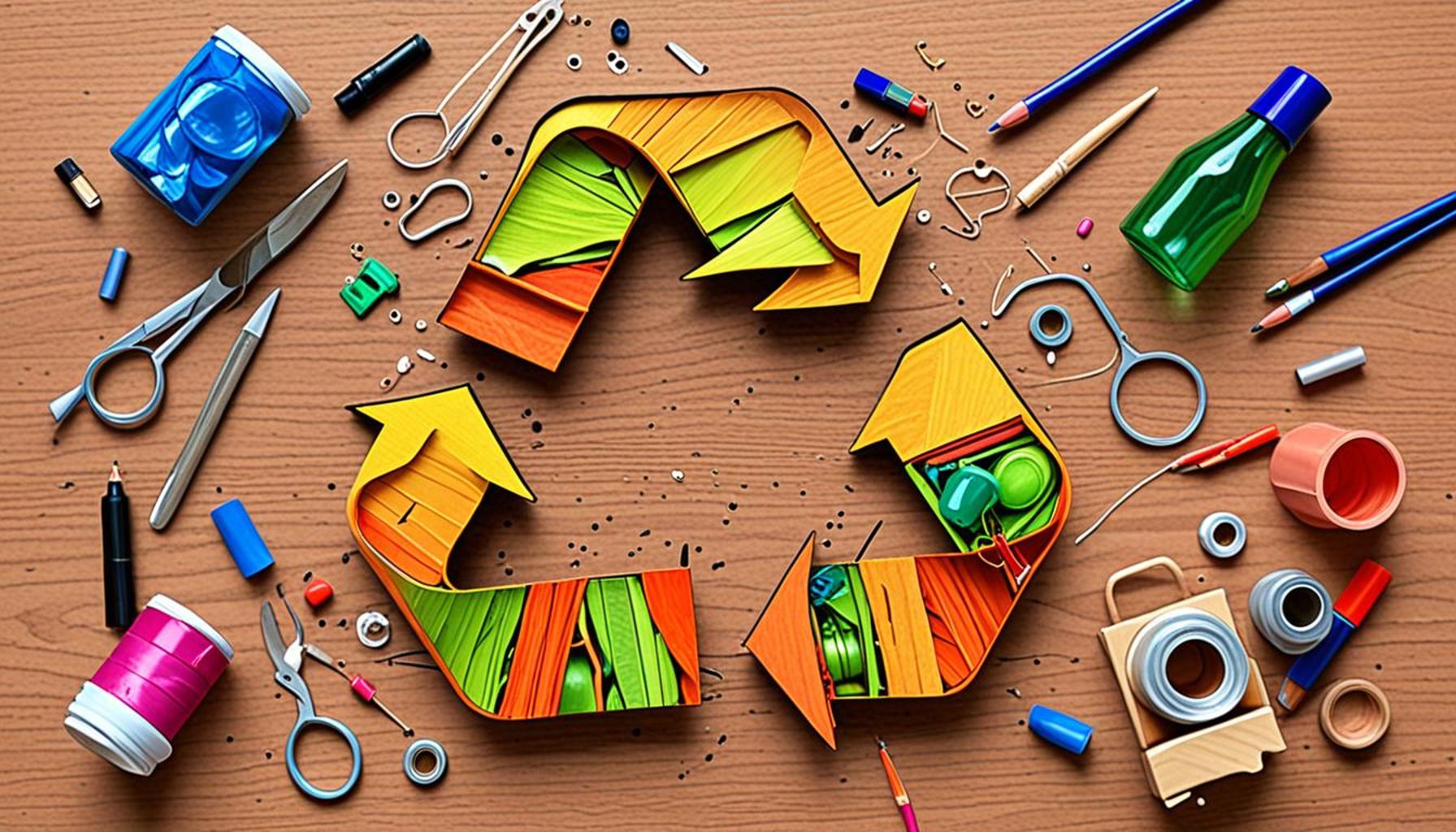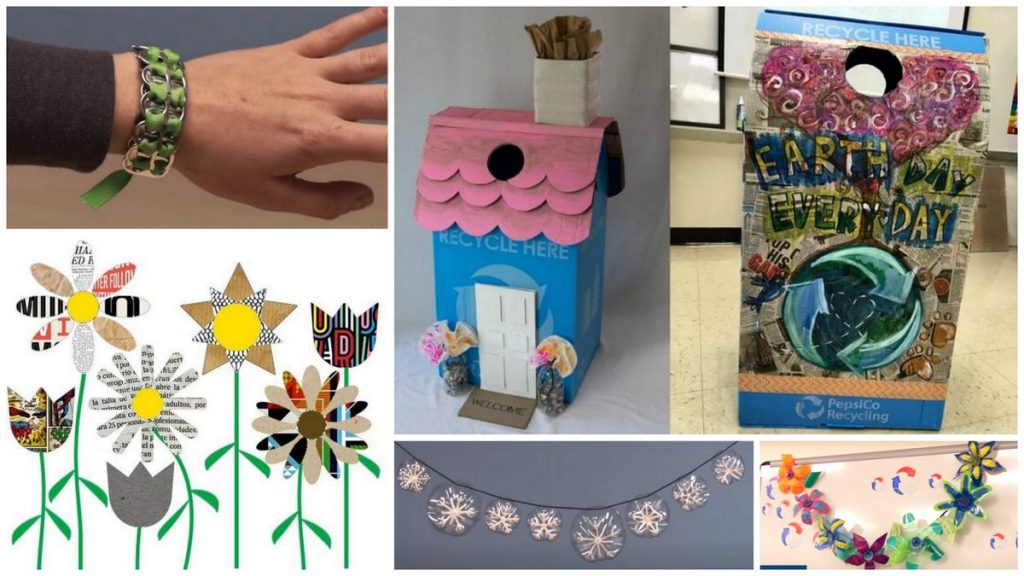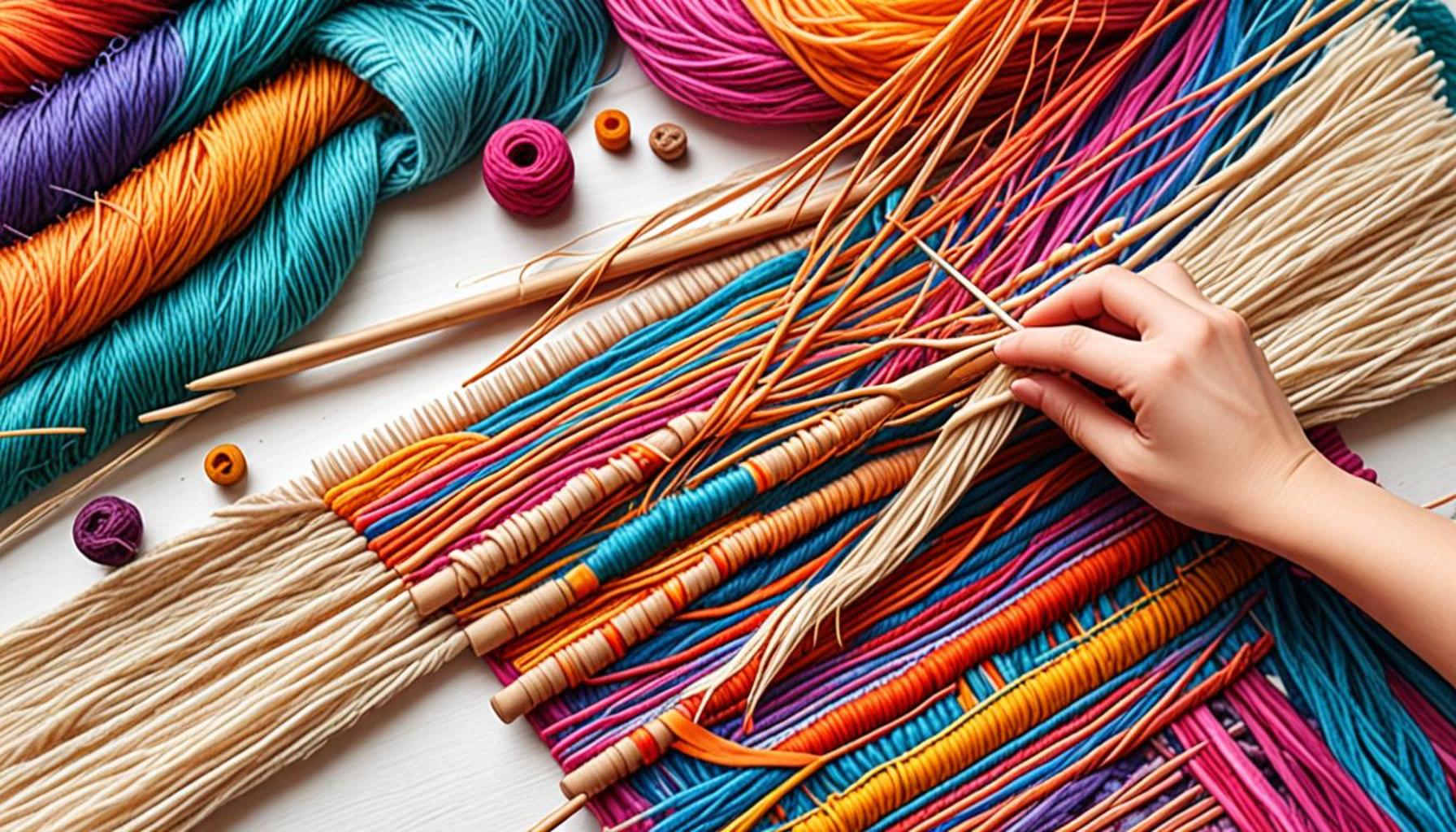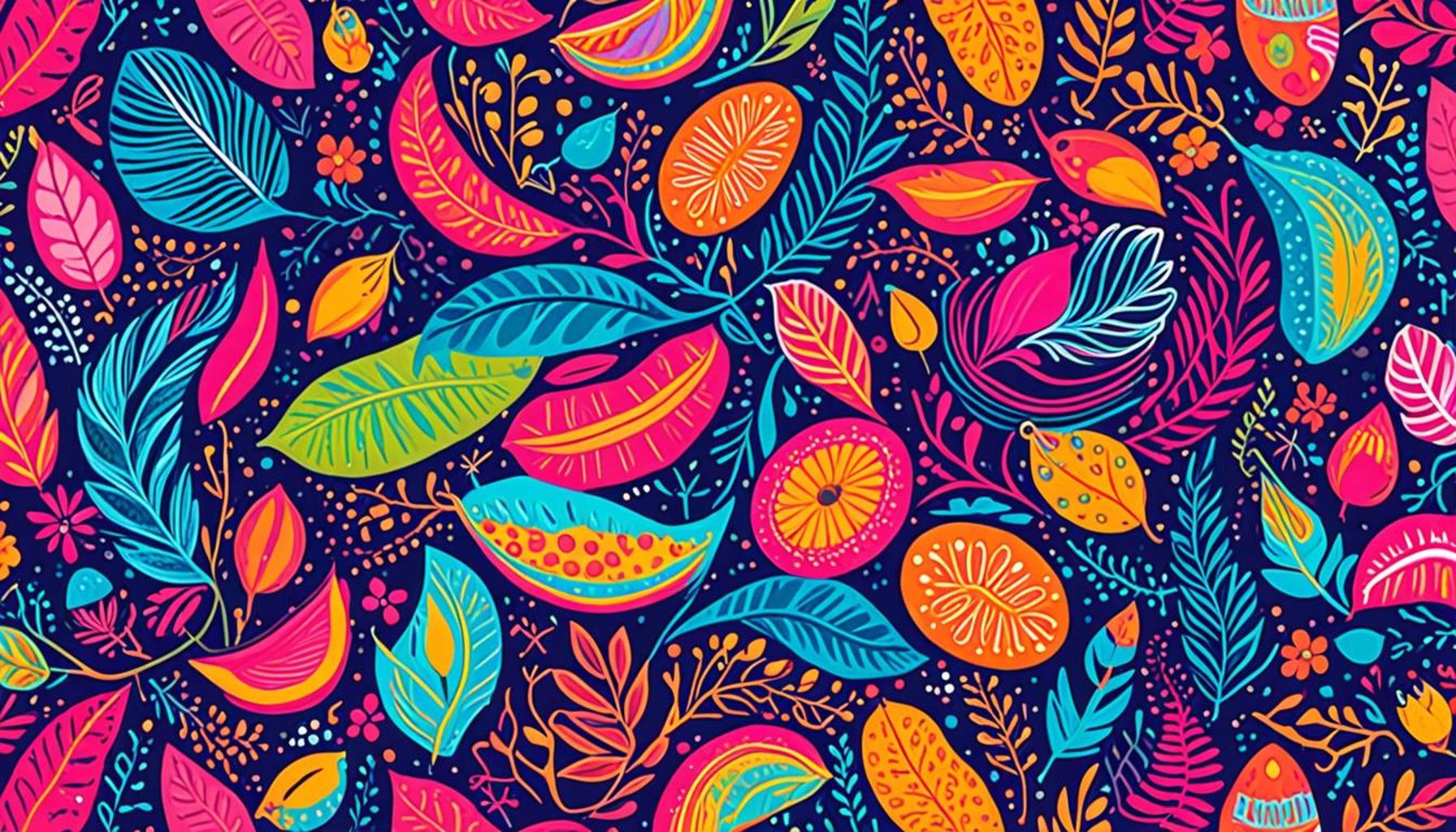Recycling Techniques in Crafts: Transforming Used Materials into Unique Pieces

Unleashing Creativity through Upcycling
As sustainability becomes a pressing global issue, recycling techniques in crafts provide a remarkable outlet for creativity and environmental stewardship. In Nigeria, where artisanal skills are celebrated, the movement to repurpose discarded materials is gaining momentum, allowing artisans and hobbyists to make beautiful, functional items out of what many consider waste.
Engaging in the art of recycling not only serves aesthetic purposes but also plays a critical role in minimizing the environmental footprint. It encourages a culture of reusability, vital in a country where waste management can be a challenge. By transforming everyday items, individuals contribute to a cleaner environment while adding personal flair to their creations.
Here are some innovative examples of recycling methods that can lead to impressive art and functional crafts:
- Upcycled furniture: Old wooden pallets are often discarded, but with a little creativity, they can be converted into stylish coffee tables or outdoor benches. In urban areas like Lagos, where space is limited, these furniture pieces not only save costs but add character to living spaces.
- Fabric crafts: Tattered clothing can undergo a transformation into artistic quilts or tote bags. In a country rich with traditional textiles, creators can blend old and new fabrics, making quilts that reflect personal histories while preserving cultural identity. This approach not only keeps fabrics out of landfills but also tells a story.
- Plastic art: PET bottles, a common sight in litter, can be reimagined into decorative flower pots or eye-catching wall hangings. These creations are especially popular at craft fairs across cities like Abuja. By using vibrant colors and unique designs, these crafts highlight the value of reducing plastic waste.
The process of upcycling ignites excitement and encourages the exploration of personal style through unique self-expression. Whether you are participating in a local market in Abuja, showcasing the ingenuity of your recycled crafts or attending workshops in Port Harcourt, the transformation of seemingly useless items into admired artwork captures attention and inspires others to embrace the movement.
This guide aims to illuminate the various recycling methods available, equipping you with the knowledge and inspiration to create your own unique masterpieces. By learning to breathe new life into materials destined for landfills, you not only foster your artistic spirit but also contribute meaningfully to environmental conservation. Join in this inspiring journey, transforming everyday waste into extraordinary creations that resonate with both beauty and purpose.

LEARN MORE: This related article may interest you
Innovative Recycling Techniques for Creative Crafts
Recycling techniques in crafts have emerged as a significant trend, particularly within the vibrant communities of Nigeria. These techniques allow artisans to innovate by utilizing materials that might otherwise contribute to overflowing landfills. With a focus on imagination and practicality, these methods give second life to a multitude of items that often go unnoticed. By exploring distinct approaches to recycling, creators can carve out unique artistic pathways while contributing to a sustainable culture.
One compelling technique is the use of paper crafts. Old newspapers, magazines, and cardboard can be transformed into remarkable works of art. From intricate paper mache sculptures to decorative wall art, the versatility of paper is both astonishing and accessible. Local artisans in cities like Enugu are now hosting workshops where participants learn to weave strips of paper to create vibrant baskets or even fashion ornaments for home décor. These classes not only encourage artistic expression but also foster community engagement around sustainability.
Additionally, the use of glass recycling is growing in popularity among Nigerian crafters. Glass bottles, often discarded without thought, can be repurposed into elegant vases or lanterns that add charm to any setting. Workshops in cities such as Ibadan are offering guidance on how to safely cut and decorate glass, turning these potential hazards into beautiful displays. This practice not only beautifies living spaces but also minimizes waste, making glasses a sought-after material in the local craft scene.
Another exciting avenue is metal crafts. Salvaging old metal scraps or cans can lead to striking art installations or functional objects. From garden artworks to functional furniture, skilled artisans are proving that waste materials can be a source of inspiration. Notably, Abuja hosts several fairs showcasing these innovative metal crafts, where trash is converted into treasure. The creativity displayed at these events often ignites deeper conversations about resourcefulness and the importance of reducing waste.
- Upcycled home decor: Materials such as tin cans and glass jars can be turned into charming candle holders or decorative storage solutions. By painting and embellishing these items, artisans create unique pieces that resonate well with local aesthetics.
- Jewelry from waste: Used buttons, scrap fabric, and even broken jewelry elements can be transformed into beautiful accessories. This technique not only allows artisans to express their style but also minimizes the demand for new materials.
- Eco-friendly packaging: Waste cardboard and paper can be creatively transformed into sustainable gift wraps and packaging solutions for small businesses. This approach appeals to eco-conscious consumers who prefer environmentally friendly options.
The growing trend of mindfully recycling materials into crafts invites not only practical solutions but also fuels an urgent conversation about environmental practices in Nigeria. As communities gather to share knowledge and skills, the art of transforming waste into art fosters a sense of pride and responsibility among artisans and the wider public alike. With each crafted piece, a story is told—one of creativity, sustainability, and an unwavering commitment to the planet.
| Advantages | Description |
|---|---|
| Environmental Impact | Utilizing recycled materials reduces waste and minimizes landfill reliance, promoting sustainability. |
| Cost-Effective Creativity | Crafting with used materials is often more affordable, allowing enthusiasts to explore their artistic side without breaking the bank. |
In the realm of crafting, the advantages of using recycling techniques cannot be overstated. Not only do these methods foster creativity in creating unique pieces, but they also carry significant environmental benefits. By transforming used materials into something extraordinary, artists actively participate in the larger movement toward sustainability, reducing the demand for new resources and contributing to a greener planet.Moreover, let’s consider the economic aspect. Crafting from recycled items tends to be budget-friendly. This enables crafters to experiment with their creative visions while being conscious of their spending. It also provides an avenue for individuals who may not have access to expensive crafting supplies, leveling the playing field and inviting a broader audience into the world of arts and crafts.As we dive deeper into specific techniques, we uncover a treasure trove of possibilities, making crafting a vibrant and resourceful hobby.
ADDITIONAL INSIGHTS: Expand your understanding here
Exploring Upcycling and Community Impact
In today’s crafting landscape, upcycling has become a central theme, particularly among Nigerian artisans eager to make a positive environmental impact. This unique approach not only reimagines discarded materials but also promotes a philosophy of sustainability that resonates deeply within communities. Materials that might seem beyond use—such as old clothes, plastic bottles, and wooden pallets—are creatively transformed into functional, stylish, and eco-friendly products. By embracing upcycling, artists cultivate an attitude of ingenuity that inspires others to rethink their consumer habits.
One prominent example of upcycling is the conversion of textiles into fashionable wearables. Many local designers are turning unusable clothing into stunning bags, accessories, or even new garments. Utilizing techniques like patchwork and embroidery, artisans are not only breathing new life into fabrics but also telling stories of resilience and creativity. The annual Lagos Fashion Week increasingly showcases collections that incorporate upcycled materials, prompting discussions about environmental stewardship in fashion. This rise in popularity has encouraged brands to consider their ecological footprint while fostering interest in sustainable practices among new fashion enthusiasts.
Furthermore, the कला of re-purposing plastic waste cannot be understated. Across Nigeria, crafters are diligently collecting plastic bags and bottles to create functional objects such as robust tote bags and trendy planters. These initiatives have gained traction in urban areas where waste management is a challenge. Organizations like the Nigerian Cleanup initiative encourage communities to gather plastic waste, which is then distributed among artisans for crafting. This partnership not only reduces landfill waste but also empowers individuals economically, creating jobs and stimulating local markets. The ingenuity behind transforming plastic waste speaks not only to the versatility of materials but also highlights the power of collective effort in tackling environmental issues.
Moreover, the concept of community workshops plays a pivotal role in promoting these recycling techniques. Often held at community centers, schools, or local markets, these workshops serve as platforms for sharing knowledge about crafting with recycled materials. They draw diverse participants from different backgrounds who come together with a shared objective—creating something beautiful from the “ugly” reality of waste. By equipping community members with skills, these workshops sow seeds of creativity that ignite local economies while building a culture of innovation and sustainability.
- Artisanship in furniture design: Creative minds are now turning pallets and old furniture into stunning custom pieces that cater to local tastes. This not only reduces the demand for new wood but also showcases the unique character of recycled materials.
- Interactive art installations: Some artisans are partnering with local government and organizations to create public art exhibits using reclaimed materials. These installations inform the public about recycling’s importance while beautifying urban areas.
- Educational initiatives: Schools are beginning to integrate recycling techniques into their curricula, encouraging students to partake in hands-on activities that promote awareness and responsibility towards recycling and waste reduction.
As Nigeria embraces a culture of transforming waste into art, the ripple effects reach far beyond individual pieces. Eager artisans are nurturing skills and confidence within their communities, creating a tapestry of sustainable practices that inspire future generations. Each crafted item reflects a story of innovation, resourcefulness, and a shared vision for a cleaner, more sustainable Nigeria.
SEE ALSO: Click here to read another article
Final Thoughts on Crafting Sustainability
As we reflect on the remarkable journey of recycling techniques in crafts, it becomes clear that these innovative practices are not merely a trend but a transformative movement. Throughout Nigeria, artisans and crafters are leading a renaissance in which used materials are elevated to the status of art, breathing fresh life into the way we perceive waste. This shift in mindset not only fosters creativity but also encourages individuals to engage in responsible consumer habits, thereby reducing their ecological footprint.
The impact of this artisan community extends far beyond the individual. By utilizing everything from textiles to plastic waste, these craftsmen are establishing a culture of sustainability that resonates within their neighborhoods. They are not just creating unique pieces; they are cultivating awareness and inspiring collective action towards better waste management practices. Community workshops and educational initiatives are proving essential in this regard, bridging generational divides and embedding the principles of recycling and upcycling deeply within local cultures.
Moreover, as public interest in these initiatives grows—exemplified by events like the Lagos Fashion Week featuring upcycled designs—the conversation around sustainability in crafts comes full circle. It reaffirms the notion that art can be both beautiful and responsible. The stories behind each crafted piece remind us that when we merge creativity with sustainability, we can forge a path toward an eco-conscious future. Thus, as we support and celebrate these remarkable artisans, we are also investing in a healthier planet for generations to come.


